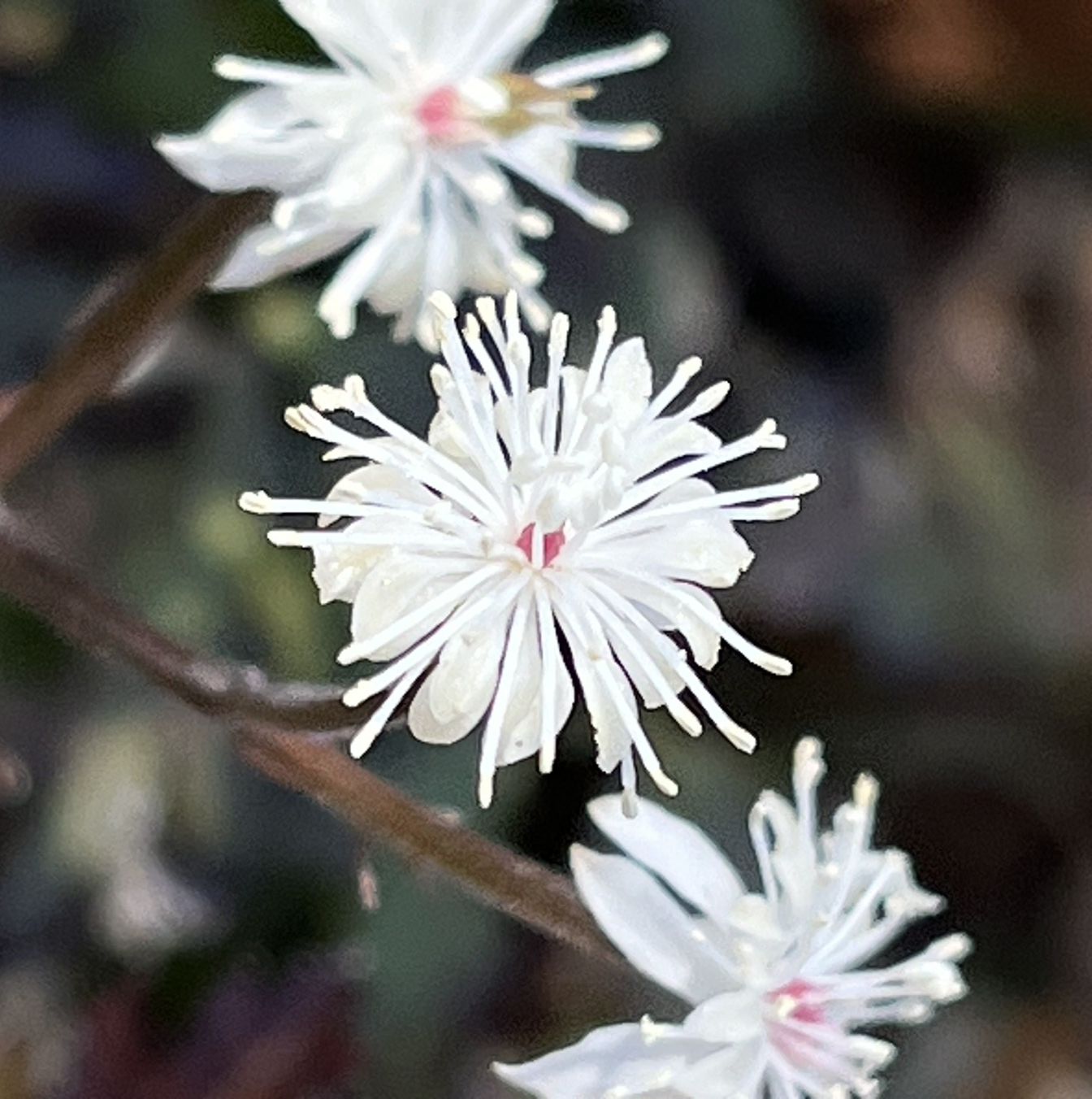オウレンは、火花が散ったような白色の花が咲き、矢車のような緑色の袋果が輪生。花後に大きく装いを変えるので、花言葉は「変身」です。
Coptis japonica blooms with white spark-like flowers and has whorls of green corn capsules that look like arrowheads. The flower language is “transformation” because the plant changes appearance dramatically after flowering.
【仮名】オウレン, キクバオウレン, セリバオウレン, コセリバオウレン
【和名】黄連, 菊葉黄連, 芹葉黄連, 小芹葉黄連
【英名】Coptis japonica, Goldthread
【学名】Coptis japonica
【誕生】03/ 25
【開花】02, 03, 04, 05月
【花色】White
オウレン
オウレンの概要
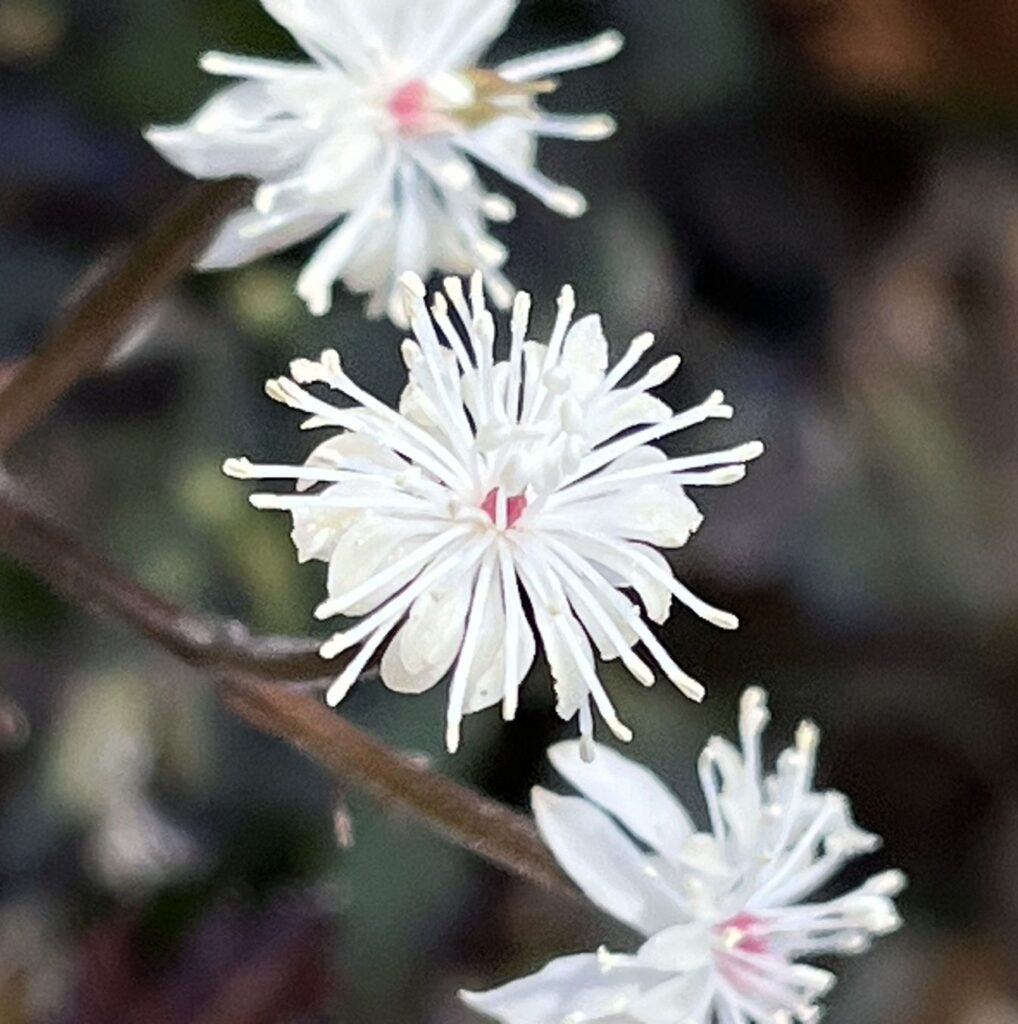
オウレンはキンポウゲ科の常緑多年草。北海道南西部、本州、四国、九州の山地に分布し、針葉樹林の薄暗く湿った林床で自生します。古くからの薬草で、火花が散ったような白色の花が咲き、矢車のような緑色の袋果が輪生。花後に大きく装いを変えるので、花言葉は「変身」です。
オウレンの名前
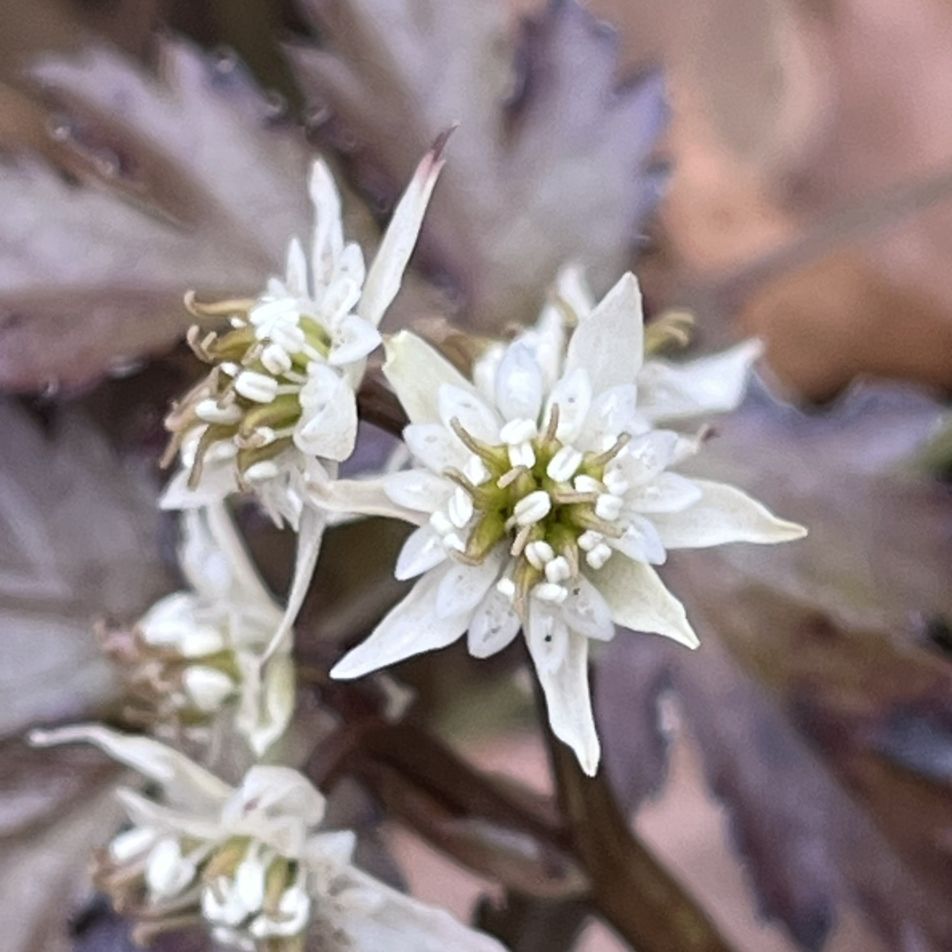
オウレンの和名「黄連」の由来は根茎が節状に連なり、切り口が黄金色だから。英名ゴールドスレッドは「金の糸」という意味で、根茎のひげ根に由来します。ラテン語の属名コプティスは「切片」という意味で、葉の切れ込みに由来。種小名ジャポニカは「日本の」という意味です。
オウレンの姿形
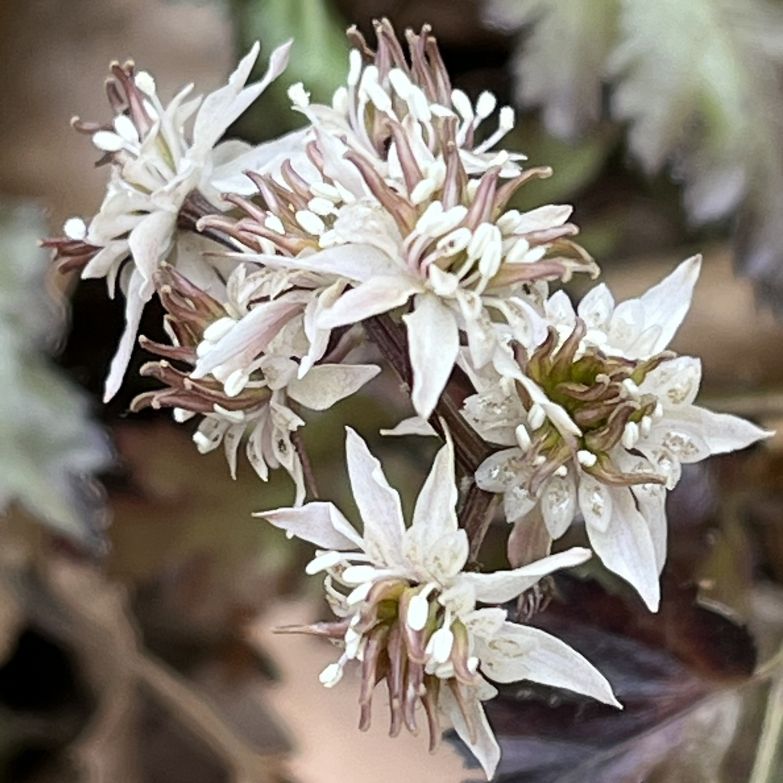
オウレンは根茎が連なり、ひげ根が生えます。葉は3出複葉で根生。光沢があり、縁に鋸歯があります。花は萼片が5枚、花弁が10枚、雄しべが多数。雌雄異株で、両性花は雌しべが赤色~緑色、雄花は雌しべが目立ちません。花後は袋果が輪生。熟すと先端の穴から種子が落ちます。
オウレンの種類
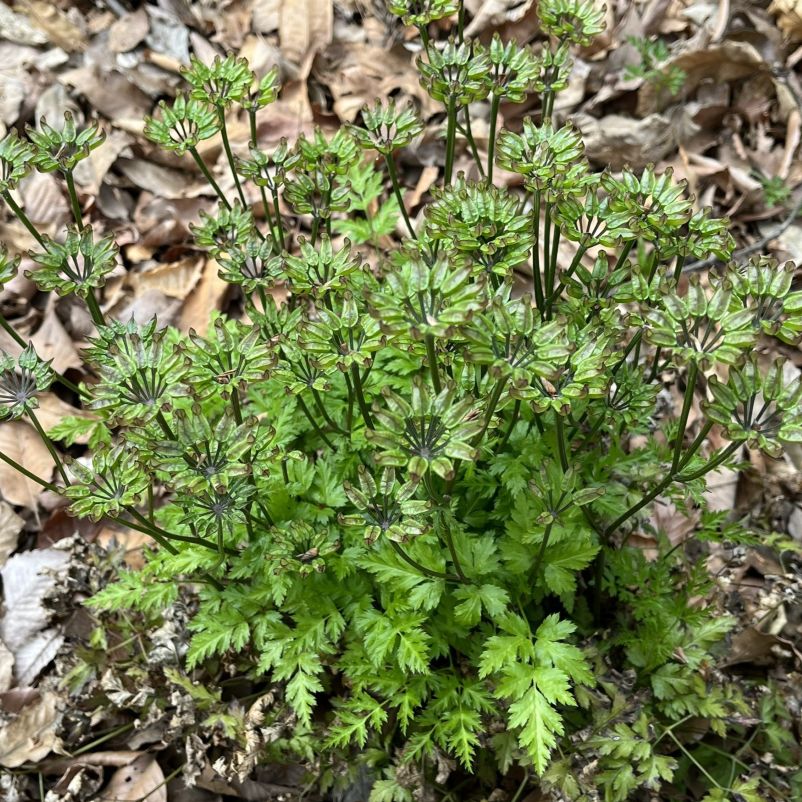
オウレンの変種「菊葉黄連」は1回3出複葉。変種名アネモニフォリアは「アネモネのような葉」という意味です。変種「芹葉黄連」は2回3出複葉。変種名メジャーは「重要な」という意味です。変種「小芹葉黄連」は3回3出複葉。変種名ジャポニカは「日本の」という意味です。
オウレンの利用
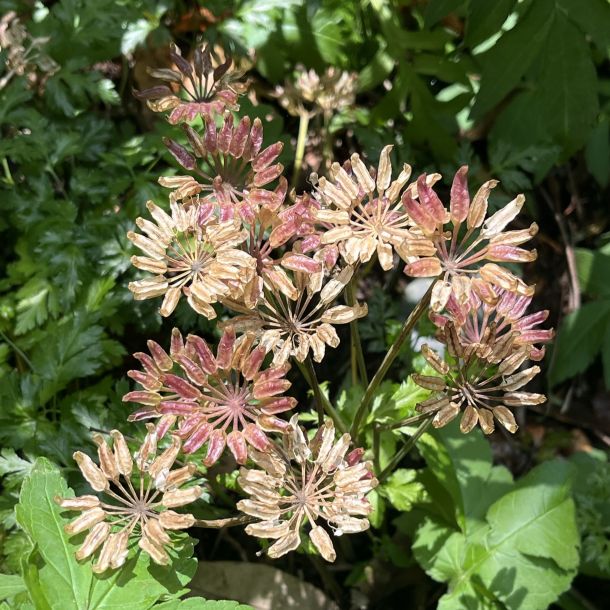
オウレンは日干しの根茎が生薬「黄連」として健胃、整腸に用いられます。有効成分ベルベリンは抗菌作用や抗炎症作用のほか、苦味によって口中の味覚神経を刺激し、唾液や胃液の分泌を促進。民間療法では、体の熱を冷ます性質があり、心のイライラを鎮める働きもあるようです。
Coptis japonica
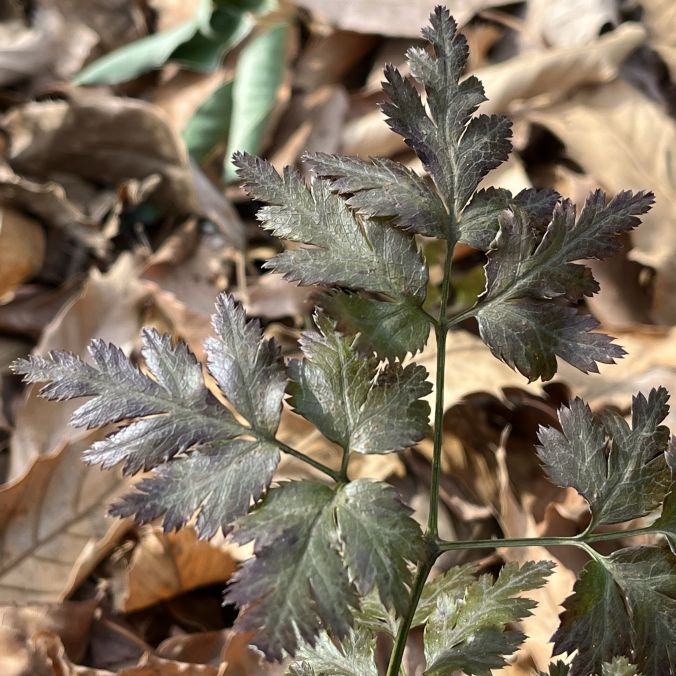
Coptis japonica is an evergreen perennial plant of the Ranunculaceae family. It is distributed in the mountainous areas of southwestern Hokkaido, Honshu, Shikoku, and Kyushu, and grows naturally in the dim and damp forest floors of coniferous forests. It is an ancient medicinal herb that blooms with white spark-like flowers and has whorls of green corn capsules that look like arrowheads. The flower language is “transformation” because the plant changes appearance dramatically after flowering.
The Japanese name of Coptis japonica means “yellow string.” This is because the rhizomes are connected in nodes and the cut surface is yellow. The English name Goldthread comes from the fibrous roots of the rhizomes. The Latin genus name Coptis means “slice” and is derived from the lobes in the leaves. The specific name japonica means “Japanese”.
Coptis japonica has a series of rhizomes with fibrous roots. The leaves are trifoliate and basal. The leaves are glossy and have serrated edges. The flowers have five sepals, ten petals, and many stamens. The plant is dioecious. The pistils of hermaphrodite flowers are red to green, but the pistils of male flowers are not noticeable. After flowering, follicles form whorls. When the follicles ripen, the seeds fall from holes at the tips.
The Coptis japonica variety anemonifolia has monofoliate compound leaves. The variety name means “anemone-like leaves”. The variety major has bifoliate compound leaves. The variety name means “important”. The japonica variety has 3-trifoliate compound leaves. The variety name means “Japanese”.
The sun-dried rhizomes of Coptis japonica are used as a herbal medicine for stomach health and intestinal regulation. The active ingredient berberine has antibacterial and anti-inflammatory effects, and its bitter taste stimulates the taste nerves in the mouth and promotes the secretion of saliva and gastric juices. In folk medicine, it is said to have the property of cooling the body’s heat and also has the effect of calming mental irritation.

